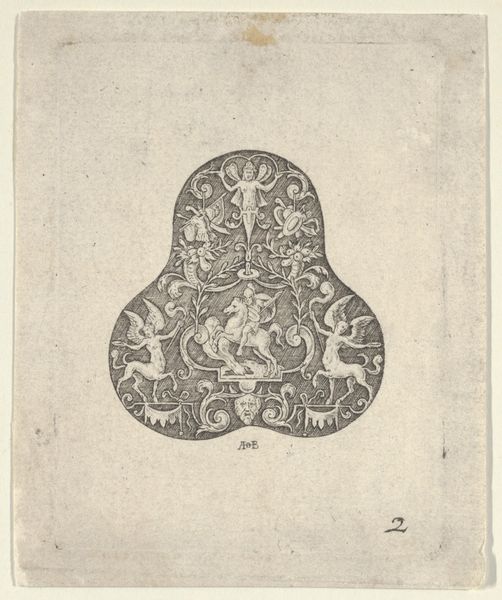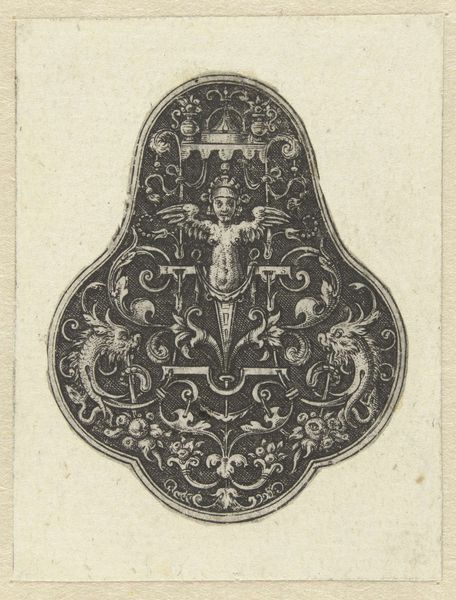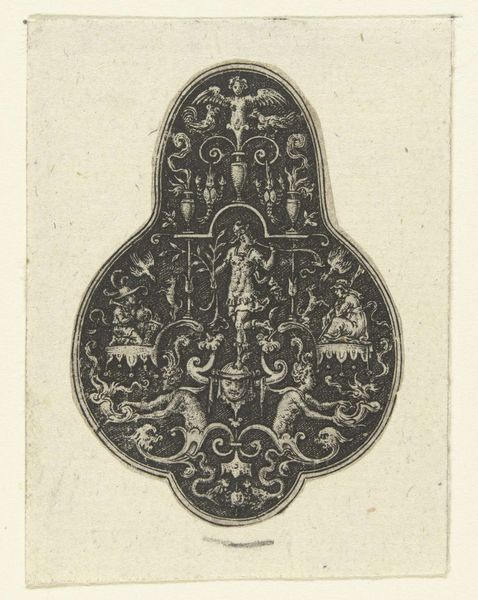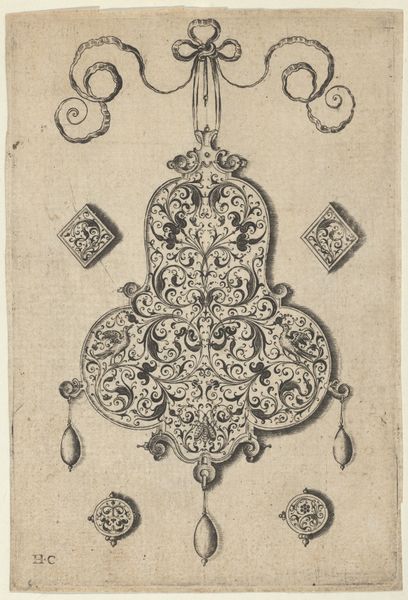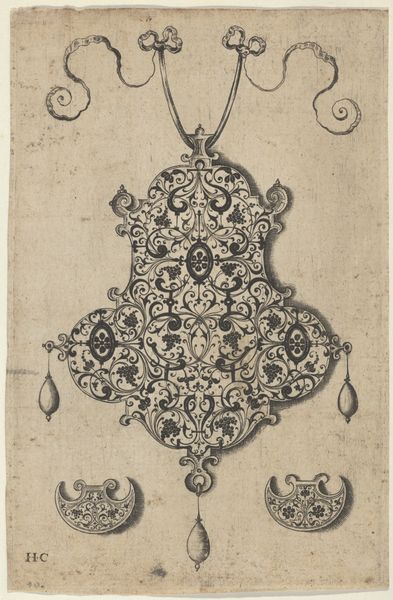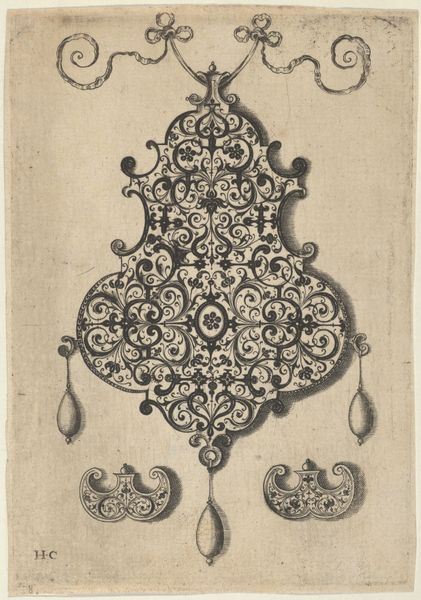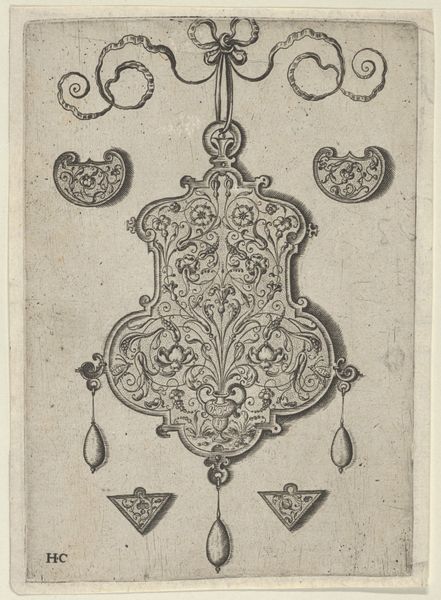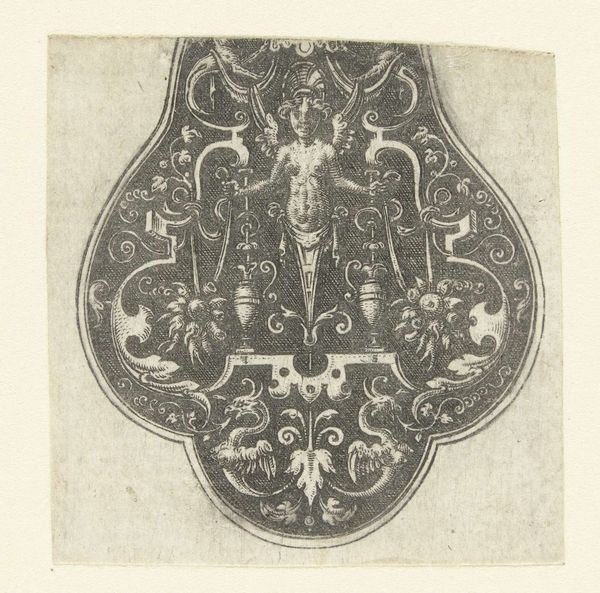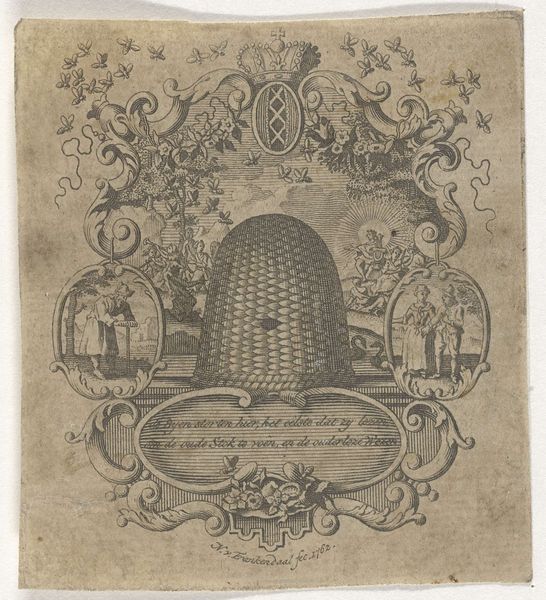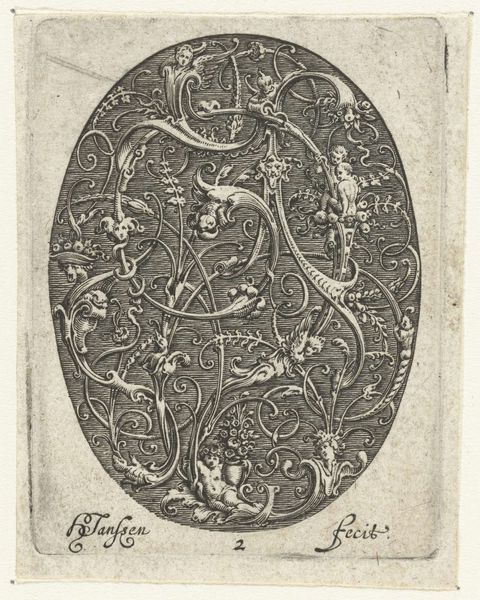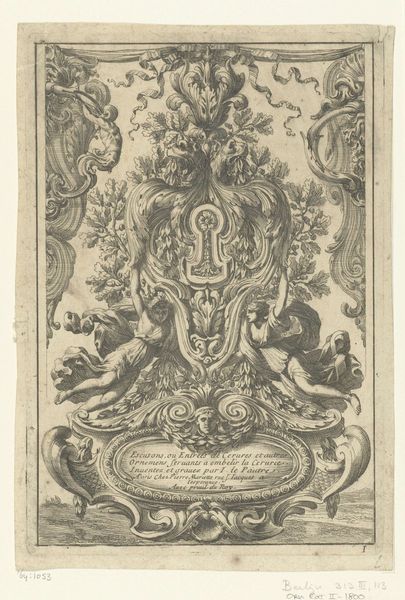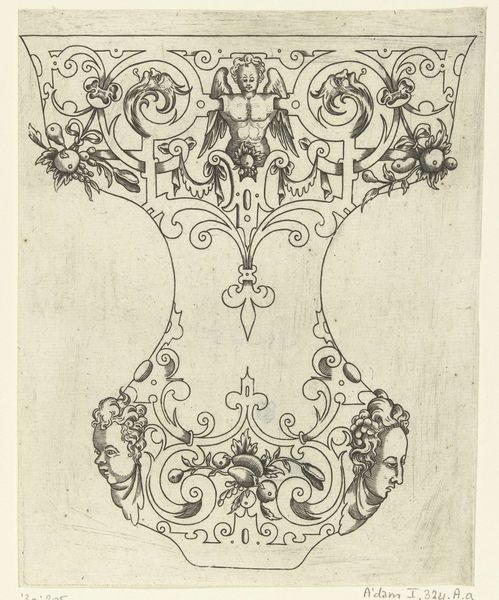
graphic-art, ornament, print, engraving
#
graphic-art
#
ornament
#
toned paper
#
light pencil work
#
medieval
# print
#
pencil sketch
#
old engraving style
#
figuration
#
11_renaissance
#
personal sketchbook
#
pen-ink sketch
#
ink colored
#
line
#
sketchbook drawing
#
watercolour illustration
#
sketchbook art
#
engraving
Dimensions: height 78 mm, width 62 mm
Copyright: Rijks Museum: Open Domain
Curator: Take a moment with this “Peervormig ornament met grotesken,” or "Pear-Shaped Ornament with Grotesques," a graphic artwork originating before 1587. The artist we know as Abraham de Bruyn captured these forms with engraving on toned paper, now residing here at the Rijksmuseum. What's your first impression? Editor: Dark and whimsical! The figures look like they're emerging from a fever dream. There’s something slightly unsettling, but also quite humorous about their contorted shapes. The whole pear shape pulses with contained energy, doesn’t it? Curator: Absolutely. Bruyn masterfully used the grotesque—those hybrid human-animal figures so popular during the Renaissance—to explore themes of transformation and the fluidity of form. Think about the cultural context! This was a time of huge exploration into natural science, human anatomy… but also, wild imagination! Editor: Exactly, a collision of reason and the irrational! The central figure, almost like a miniature Hercules, seems poised between worlds. Notice how the snakes entwine the scene - they almost become the shackles on humanity itself? Are we trapped in our animalistic impulses or transcending them? Curator: I love that interpretation. Bruyn was obviously working within a well-established tradition of ornamental design but I think he pushed the boundaries a bit, injecting a darker psychological current, with more overtly pagan symbols, where others might have focused purely on elegant embellishment. Editor: It’s a potent reminder of the enduring power of symbols. Even when they’re presented in miniature, like this piece, they can speak volumes about the anxieties and aspirations of a culture. Looking at it makes you wonder, doesn’t it, what symbols we create now, that centuries later, might spark as much debate? Curator: Right?! It's as if Bruyn’s grotesque figures are whispering secrets across time! Each snakelike tendril hints at narratives that escape clear explanation, but touch us on a subconscious level. This image really exemplifies the idea that art transcends epochs.
Comments
No comments
Be the first to comment and join the conversation on the ultimate creative platform.
